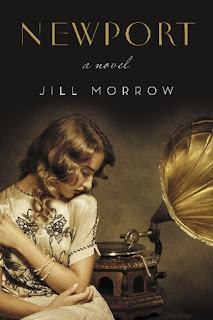Attorney Adrian de la Noye and his young colleague
Jim, have been called by Adrian’s most important client Bennett Chapman to
Newport to update Bennett’s will in 1921.
Upon arrival, Adrian and Jim find themselves in an odd predicament. Bennett is going to marry the much younger
Catherine Walsh and wants to change his will to leave his immense estate to
her. Bennett’s two children, Nicholas
and Chloe have showed up to dispute this and to question Bennett’s sanity. Through séance’s led by Catherine’s young
niece Amy, Bennett believes that his late wife Elizabeth Chapman is telling him
to marry Catherine. Adrian is stunned by
that the normally rational Bennett would believe this, and is also shocked to
see Catherine again after knowing her in his past.
The novel flashes back and forth between Newport in
1898 to reveal Adrian and Catherine’s past and then to the “present” story in
1921. Although I guessed various parts
of the story, I thought it was very unique.
I liked the format, but I thought the past story moved a bit slow. I loved all of the characters, especially
Adrian’s wife Constance, who played a very minor role in the story. Morrow did such a great job of bringing the
characters to life that I felt bereft when I finished the book. I felt like this should be the start of a
series set during the 1920’s and 1930’s with Adrian, Jim, and Constance working
on various cases together.
Newport had great notes in the end, especially with
author Jill Morrow giving background on séance’s during this particular time
period. I thought it was
fascinating. There is also insight into
the elite of the day and a list of great book club questions.
Overall, Newport was an enjoyable and unique
historical fiction novel set in the 1920’s and 1890’s with a great cast of
characters. I recommend it!
Book Source:
Review Copy from William Morrow – Thanks!

This sounds very enjoyable, Laura. I'm glad you liked all of the characters a lot. That's important to me as well when I'm reading a novel.
ReplyDeleteThanks! Characters for me are the best part of a novel.
ReplyDelete